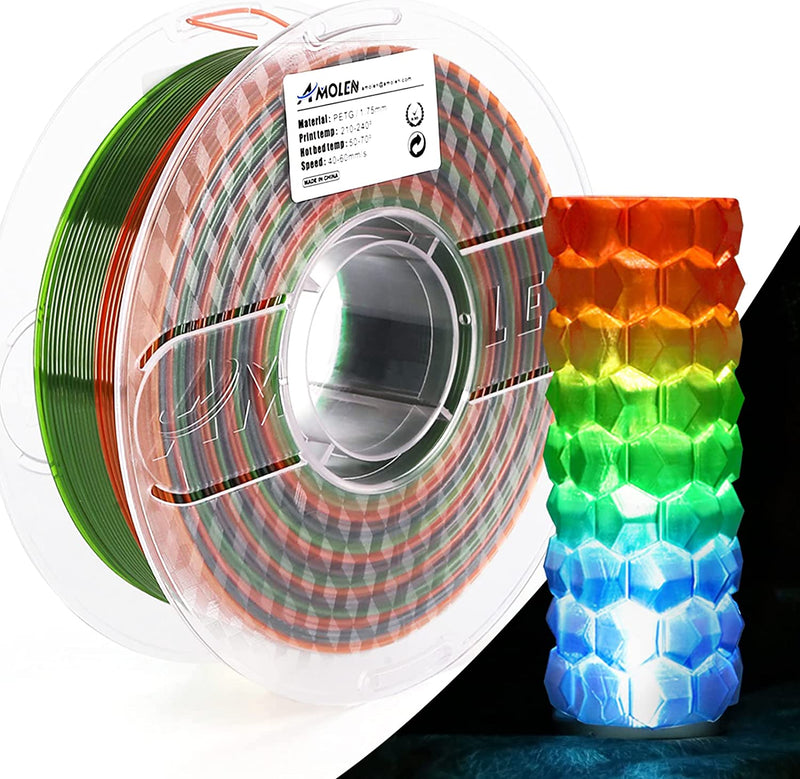Unlock Your 3D Printing Potential: Discover the Best PETG Filaments That Will Transform Your Projects!
PETG filament has emerged as a top choice for 3D printing enthusiasts and professionals alike, thanks to its remarkable properties that bridge the gap between ease of use and durability. As a glycol-modified version of PET, this filament combines the best features of plastic and offers a versatile material for a wide range of applications. Whether you're crafting intricate designs or functional prototypes, PETG filament provides an ideal balance of strength, flexibility, and clarity. In this article, we will delve into the ins and outs of PETG filament, exploring where to purchase it, and examining various brands available on the market. With this knowledge, you can make informed decisions that will elevate your 3D printing projects to new heights.

What is PETG Filament?
PETG filament stands for Polyethylene Terephthalate Glycol, a thermoplastic that is known for its excellent mechanical properties. One of the standout characteristics of PETG is its strength and impact resistance, making it an ideal choice for projects that require durability without sacrificing flexibility. Moreover, PETG is relatively easy to print with, providing a smoother experience compared to other materials like ABS. It adheres well to the print bed, reducing the chances of warping during the printing process. This makes it suitable for both beginners and seasoned pros. In terms of applications, PETG filament excels in producing functional parts, prototypes, and even food-safe containers, showcasing its versatility in meeting diverse project requirements.
Benefits of Using PETG Filament
One of the primary benefits of PETG filament is its superior durability compared to other common filaments like PLA and ABS. While PLA is biodegradable and easy to print, it lacks the toughness required for functional applications. ABS, on the other hand, is known for its strength but can be tricky to work with due to its propensity to warp. PETG filament strikes a balance, offering impressive temperature resistance and chemical stability, making it suitable for both indoor and outdoor uses. Additionally, PETG’s low shrinkage rate during cooling results in minimal warping, allowing for more precise prints. Furthermore, it is more environmentally friendly than many alternatives, as it is recyclable, aligning with the growing trend of sustainable 3D printing practices.
Where to Find PETG Filament
Finding the right PETG filament for your 3D printing needs can be accomplished through various channels. Online retailers have become popular choices, offering a vast selection and convenience. Websites specializing in 3D printing supplies usually carry multiple brands, making it easier to compare options. Local hobby shops and specialty stores can also be excellent places to find PETG filament, allowing you to see colors and textures in person. When selecting a retailer, consider factors such as shipping times, customer service, and return policies. Additionally, joining local maker communities or online forums can provide valuable insights on where to purchase quality PETG filament, as well as recommendations from fellow 3D printing enthusiasts.
Comparing Different Brands of PETG Filament
When it comes to choosing PETG filament, not all brands are created equal. Key factors to consider include printability, which can vary greatly between brands, affecting your overall printing experience. Color options are also essential; some brands offer a wide spectrum, including translucent and specialty colors that can enhance your project. Customer reviews are another critical consideration; they provide insights into the filament’s performance and reliability. A good practice is to look for brands that have been tested by the community or have established a reputation for quality. Evaluating the filament's consistency, ease of use, and overall print quality can help you make an informed decision without being tied to specific brand names.
Tips for Using PETG Filament in 3D Printing
Successfully printing with PETG filament involves some specific techniques to ensure the best results. First and foremost, pay attention to your temperature settings; a typical nozzle temperature for PETG ranges from 220°C to 260°C, while the bed temperature should be set between 70°C and 80°C to promote adhesion. Bed adhesion techniques such as using a heated bed, applying a glue stick, or using blue painter's tape can make a significant difference. Additionally, consider printing at a slower speed to improve layer adhesion and reduce stringing. Post-processing can also enhance your final product; for instance, using a heat gun can help smooth out any rough edges. With these tips, you’ll be well on your way to creating stunning prints with PETG filament.
Embracing PETG Filament for Enhanced 3D Printing
In conclusion, PETG filament stands out as a versatile and reliable choice for 3D printing, offering numerous benefits that cater to both hobbyists and professionals. Its durability and ease of use make it an excellent alternative to PLA and ABS, while the variety of options for purchasing it opens doors for all users. By carefully comparing different brands and understanding the nuances of using PETG filament, you can significantly enhance your 3D printing projects. We encourage you to explore the many options available and experiment with PETG filament to unlock its full potential in your creative endeavors.








